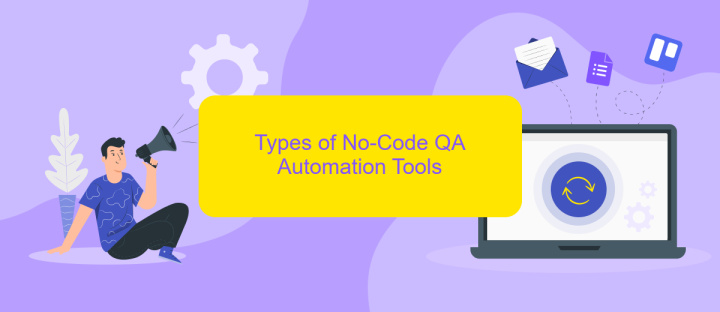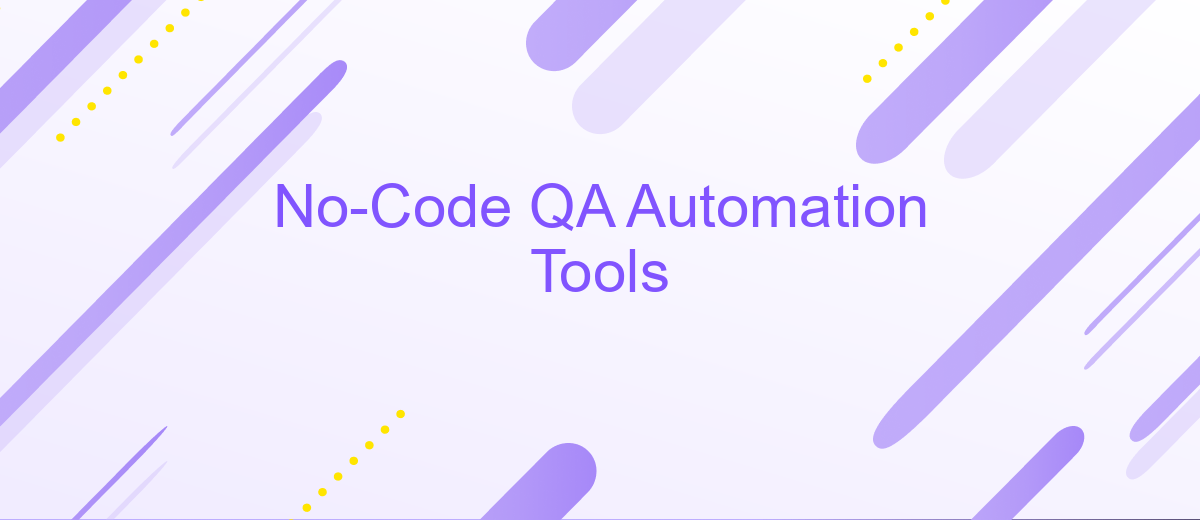No-Code QA Automation Tools
In today's fast-paced tech landscape, the demand for efficient and reliable software testing has never been higher. No-code QA automation tools are revolutionizing the way quality assurance is conducted, empowering teams to create robust automated tests without writing a single line of code. This article explores the benefits and key features of these innovative tools, making QA accessible to everyone.
Introduction
In today's fast-paced software development environment, ensuring the quality of applications is paramount. No-Code QA Automation Tools have emerged as a game-changer, enabling teams to streamline their testing processes without the need for extensive programming knowledge. These tools empower testers, developers, and even non-technical stakeholders to create, manage, and execute test cases efficiently.
- Ease of use: Intuitive interfaces make it simple for anyone to create test cases.
- Cost-effective: Reduces the need for specialized QA engineers.
- Integration capabilities: Seamlessly integrates with other tools and services.
- Scalability: Easily scales with the growth of your project.
One of the standout features of modern No-Code QA Automation Tools is their ability to integrate with various third-party services. For instance, ApiX-Drive allows users to automate workflows by connecting different applications without writing a single line of code. This not only enhances the testing process but also ensures that all integrated systems work harmoniously, thereby improving overall software quality.
Benefits of No-Code QA Automation Tools

No-code QA automation tools offer significant benefits, especially for teams without extensive programming expertise. These tools enable testers to create and execute automated tests using visual interfaces, reducing the dependency on specialized developers. This democratizes the testing process, making it more inclusive and allowing for quicker iterations and faster feedback loops. As a result, teams can improve software quality and accelerate time-to-market without the overhead of maintaining complex codebases.
Another key advantage is the ease of integration with other tools and services. For instance, platforms like ApiX-Drive facilitate seamless integration with various applications, enhancing the overall efficiency of the QA process. By automating workflows and data transfers between different systems, teams can focus more on test execution and analysis rather than manual setup and maintenance tasks. This not only streamlines operations but also ensures that testing processes are consistent and reliable, ultimately leading to more robust software products.
Types of No-Code QA Automation Tools

No-code QA automation tools have revolutionized the way software testing is conducted, making it more accessible to non-technical users. These tools can be broadly categorized into several types based on their functionality and use cases.
- Visual Testing Tools: These tools focus on the UI/UX aspects of an application. They allow users to create test cases by interacting with the application's interface, capturing screenshots, and comparing visual changes. Examples include Applitools and Percy.
- Workflow Automation Tools: These tools help automate repetitive tasks and integrate various services without writing code. ApiX-Drive, for instance, enables seamless integration between different applications, facilitating automated data transfer and process management.
- Test Management Tools: These tools provide a platform for planning, executing, and tracking test cases. They often include features like drag-and-drop interfaces and pre-built templates to simplify the testing process. Examples include TestRail and PractiTest.
These no-code QA automation tools empower teams to enhance their testing capabilities without requiring extensive programming knowledge. By leveraging these tools, organizations can achieve higher efficiency, better test coverage, and faster time-to-market for their applications.
How to Choose the Right No-Code QA Automation Tool

Choosing the right no-code QA automation tool can significantly impact your software development process. The first step is to identify your specific needs and requirements, such as the types of applications you are testing and the level of technical expertise within your team.
Next, consider the tool's ease of use and learning curve. A good no-code QA automation tool should be intuitive and user-friendly, allowing team members with varying technical skills to contribute effectively. Additionally, evaluate the tool's integration capabilities with your existing systems and workflows.
- Compatibility with your tech stack
- Scalability and performance
- Support and documentation
- Cost and licensing
- Integration options, such as ApiX-Drive for seamless data flow
Finally, take advantage of free trials or demos to get hands-on experience with the tool before making a decision. This allows you to assess whether the tool meets your needs and fits well within your team's workflow. Making an informed choice ensures that you invest in a solution that enhances your QA processes effectively.
Conclusion
No-code QA automation tools have revolutionized the software testing landscape by democratizing access to powerful testing capabilities. These tools enable testers, regardless of their coding skills, to create, execute, and manage tests efficiently. By reducing the dependency on developers, these platforms empower QA teams to take full control of the testing process, ensuring faster release cycles and higher product quality.
Moreover, the integration capabilities of no-code QA automation tools enhance their versatility. Services like ApiX-Drive facilitate seamless integrations with various applications and systems, streamlining the automation workflow. As a result, teams can easily connect their testing tools with other essential software, ensuring a cohesive and efficient testing environment. In conclusion, no-code QA automation tools not only simplify the testing process but also provide the flexibility and integration capabilities necessary for modern software development.
FAQ
What are No-Code QA Automation Tools?
How do No-Code QA Automation Tools benefit non-technical users?
Can No-Code QA Automation Tools be integrated with other software systems?
Are No-Code QA Automation Tools suitable for complex testing scenarios?
What are some common features of No-Code QA Automation Tools?
Time is the most valuable resource for business today. Almost half of it is wasted on routine tasks. Your employees are constantly forced to perform monotonous tasks that are difficult to classify as important and specialized. You can leave everything as it is by hiring additional employees, or you can automate most of the business processes using the ApiX-Drive online connector to get rid of unnecessary time and money expenses once and for all. The choice is yours!

